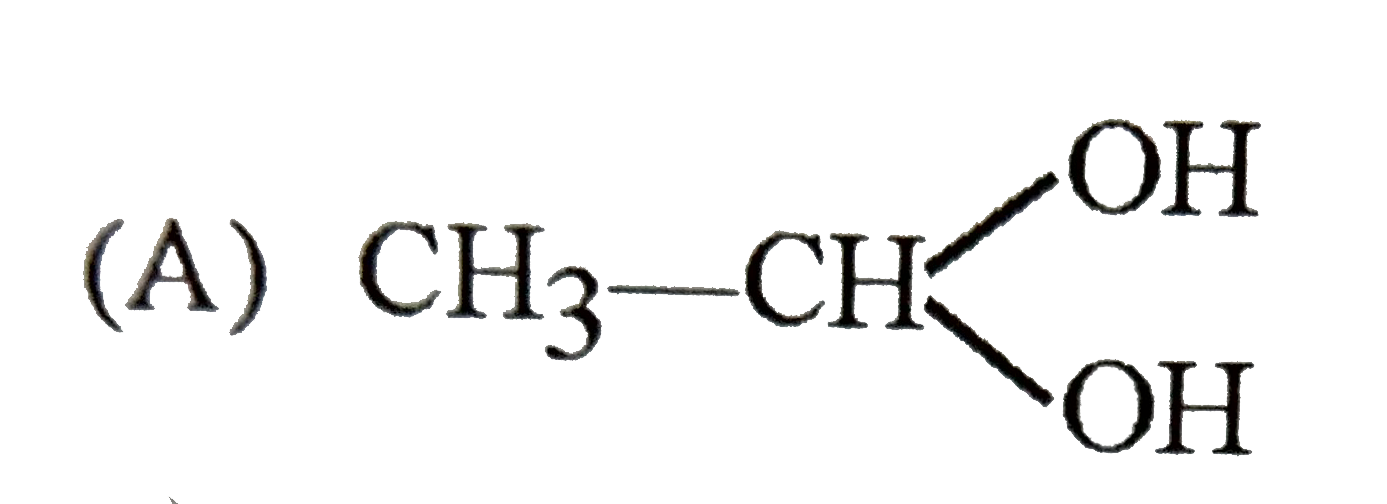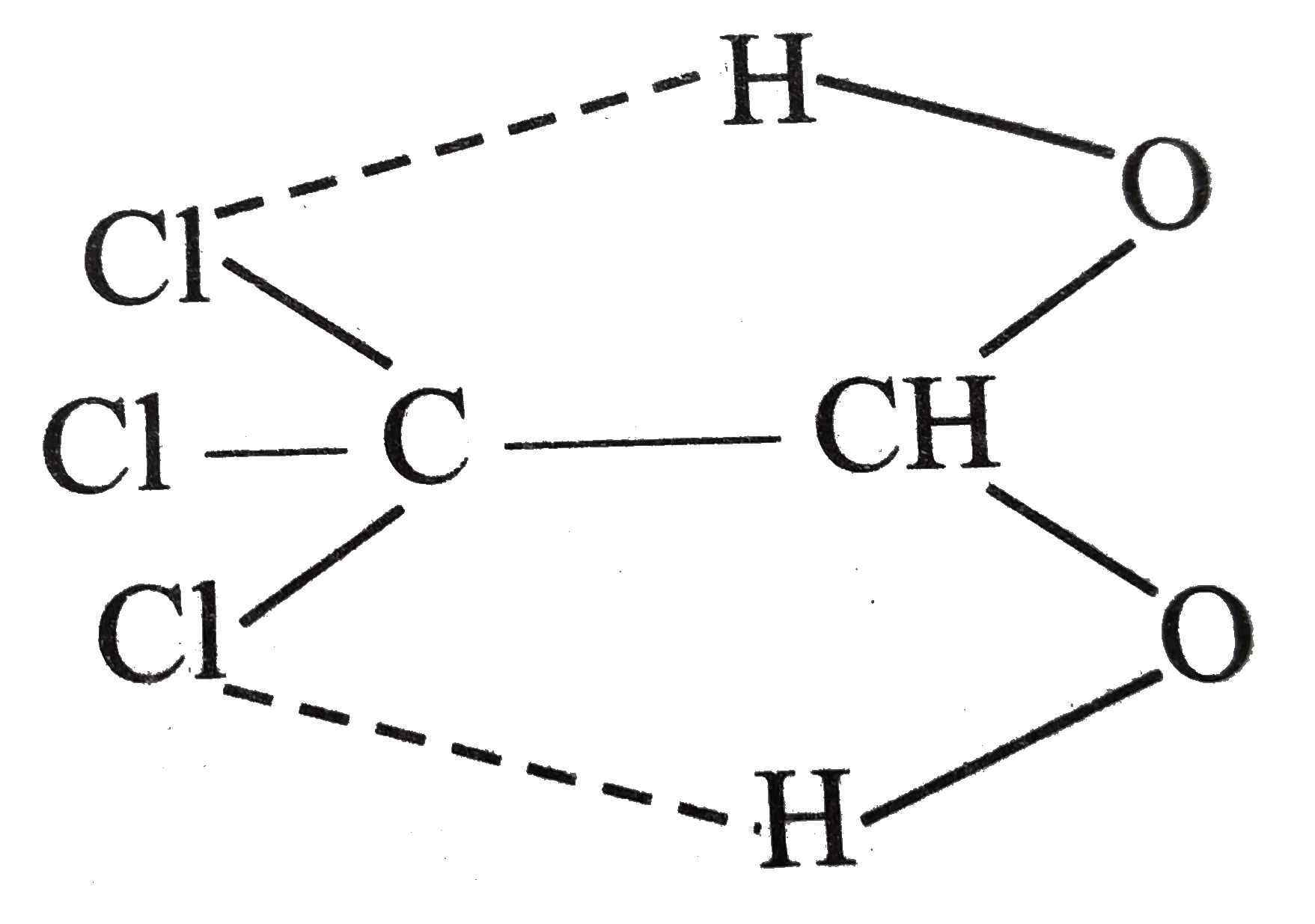An unstable compound having two-OH groups on terminal carbon would immediately give a/ an
ketone
monohydric alcohol
aldehyde
Carboxylic acid
The correct Answer is:C
The following Reaction are
Topper's Solved these Questions
- ALDEHYDES,KETONES AND CARBOXYLIC ACIDSBOOK - MARVEL PUBLICATIONCHAPTER - ALDEHYDES,KETONES AND CARBOXYLIC ACIDSEXERCISE - CARBOXYLIC ACIDS
198 Videos
- ALCOHOL,PHENOLS AND ETHERS BOOK - MARVEL PUBLICATIONCHAPTER - ALCOHOL,PHENOLS AND ETHERS EXERCISE - Test your Grasp : Ethers
30 Videos
- BIOMOLECULESBOOK - MARVEL PUBLICATIONCHAPTER - BIOMOLECULESEXERCISE - TEST YOUR GRASP
40 Videos
Similar Questions
Knowledge Check
A compound containing two-OH groups attached with same carbon dehydrates easily, but with which on of the following is its stable ?
ACH3−BH3C−CH2−CCl3C−DNone of theseA compound containing two −OH groups attached with same carbon is unstable, but which one of the following is stable ?
A B
B C
C DNone
DNoneAldehydes are carbonyl compound having carbonyl carbon attached with
Aat least one alkyl groupBat least one hydrogenCtwo alkyl groupsDboth (a) and (b)
Carbon forms a large number of compounds because of its two unique properties formed many have long straight chains of carbon, branched chains of carbon or rings of carbon. In these compounds, carbon atoms may form single, double or triple covalent bonds. Compounds in which the carbon atoms are linked to each other by single bonds are called saturated carbon compounds whereas compounds having at least one carbon-carbon double or triple bond are called unsaturated carbon compounds. Compounds containing only carbon and hydrogen are known as hydrocarbons. Based on the above information, answer the following questions.
Give two examples of carbon compounds which have ring structure.
View SolutionCarbon forms a large number of compounds because of its two unique properties formed many have long straight chains of carbon, branched chains of carbon or rings of carbon. In these compounds, carbon atoms may form single, double or triple covalent bonds. Compounds in which the carbon atoms are linked to each other by single bonds are called saturated carbon compounds whereas compounds having at least one carbon-carbon double or triple bond are called unsaturated carbon compounds. Compounds containing only carbon and hydrogen are known as hydrocarbons. Based on the above information, answer the following questions.
Give two examples of carbon compounds which have ring structure.
View SolutionCarbon forms a large number of compounds because of its two unique properties formed many have long straight chains of carbon, branched chains of carbon or rings of carbon. In these compounds, carbon atoms may form single, double or triple covalent bonds. Compounds in which the carbon atoms are linked to each other by single bonds are called saturated carbon compounds whereas compounds having at least one carbon-carbon double or triple bond are called unsaturated carbon compounds. Compounds containing only carbon and hydrogen are known as hydrocarbons. Based on the above information, answer the following questions.
What are saturated hydrocarbons? Give one example.
View SolutionCarbon forms a large number of compounds because of its two unique properties formed many have long straight chains of carbon, branched chains of carbon or rings of carbon. In these compounds, carbon atoms may form single, double or triple covalent bonds. Compounds in which the carbon atoms are linked to each other by single bonds are called saturated carbon compounds whereas compounds having at least one carbon-carbon double or triple bond are called unsaturated carbon compounds. Compounds containing only carbon and hydrogen are known as hydrocarbons. Based on the above information, answer the following questions.
i. Why does carbon form large number of compounds?
View SolutionCarbon forms a large number of compounds because of its two unique properties formed many have long straight chains of carbon, branched chains of carbon or rings of carbon. In these compounds, carbon atoms may form single, double or triple covalent bonds. Compounds in which the carbon atoms are linked to each other by single bonds are called saturated carbon compounds whereas compounds having at least one carbon-carbon double or triple bond are called unsaturated carbon compounds. Compounds containing only carbon and hydrogen are known as hydrocarbons. Based on the above information, answer the following questions.
i. Why does carbon form large number of compounds?
View Solution

 .
.